Gardening can be an enjoyable and rewarding activity to participate in. However, if you have never done it before, then it can be quite overwhelming knowing where you need to start. There are a couple of things you need to keep in mind when you start gardening to ensure that all your plants and vegetables continue to grow.

To make everything easier for you, we have created this ultimate guide, which will cover all the key areas when it comes to gardening. This includes the tools you need, plants you could grow and important tips to keep in mind.
Read on to discover this ultimate guide to gardening, which is perfect for beginners.
Getting Started
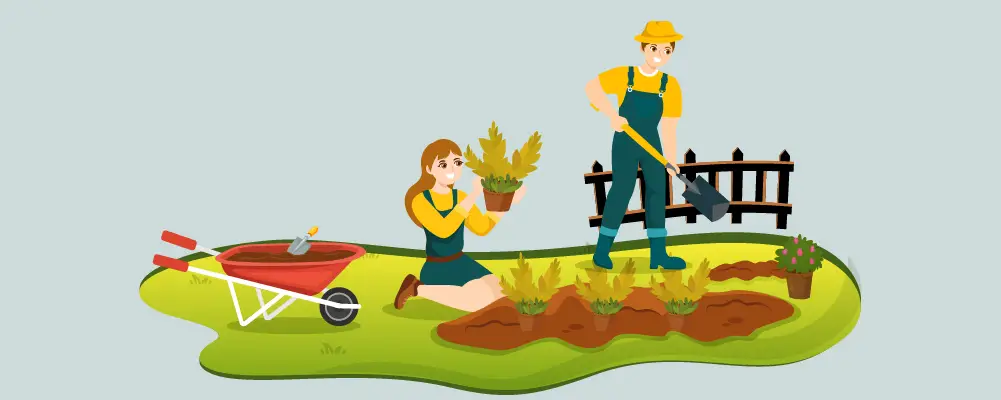
Starting your own garden, at home, takes a little bit of preparation and research. You need to learn about the region that you live in, including weather conditions throughout the year and the type of soil found in your region.
In addition to this, you need to be aware of your growing zones, thus you know where and when you should be planting particular plants in your garden. How much sunlight your garden obtains is vital for this. This will also help you know when you can harvest your plants as well.
Other factors you need to keep in mind are the actual space that you are working with, and plants that you would like to grow.
Plan Your Garden Design
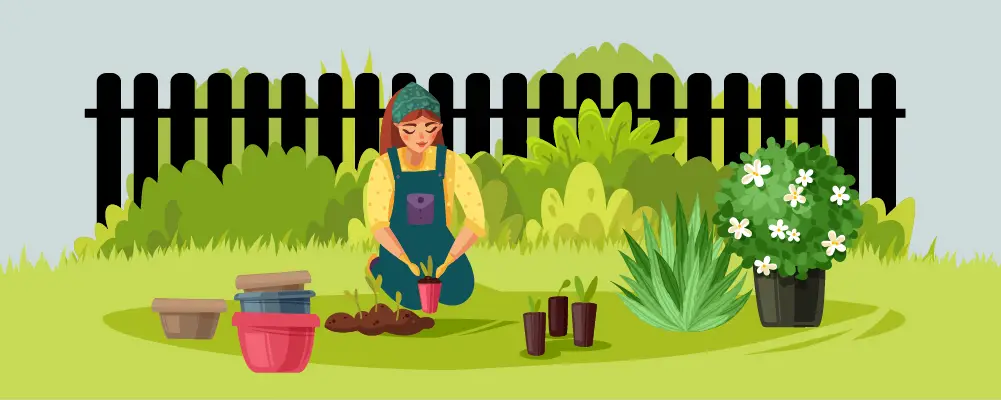
If you are new to gardening, then you need to ensure that you plan how you will use your space. This will then allow you to use all the space you have wisely and effectively.
Location
Gardens come in a variety of sizes and styles, so you have to decide what would work for you and what is affordable. Where you put particular plants matters, whether you have a private plot of land with lots of sun, are gardening on a communal allotment, or have a small balcony with limited space.
You need to be realistic with the location of your garden and how much space you have to work with.
Placement
A big mistake many gardens make is placing their plants in the wrong place. Many gardening experts will tell you that your garden must be placed in an area that is full of sun and near a convenient water source.
You should also keep in mind which plants you are growing together. As not all plants get along with each other as they have different requirements. For example, beans and cauliflower or garlic must never be planted next to one another.
Also, the placement of your plants will determine how your garden looks overall. If you wish to plant various flowers, then you may wish to have a mixture of colors, produced by different plants.
Types Of Containers
Containers are a wonderful thing to have, since they are ideal when you are short on space. There are a couple of different types of containers, to choose from, when you are starting your garden, this includes the following:
- Terracotta/Clay – These pots look very attractive, but are very prone to cracking when temperatures drop.
- Metal – Metal pots have a very modern look, and are frost proof but can heat up quickly during the summer.
- Plastic – These are the most common pots to come across, available in a broad range of sizes.
- Wood – Wooden pots are usually used when growing fruit trees or larger plants.
No matter the type of pot you choose, the RHS explains that you must ensure that it is a robust container and as large as necessary to allow plants to flourish. The pots should also have multiple holes at the base for good drainage.
Plants And Flowers
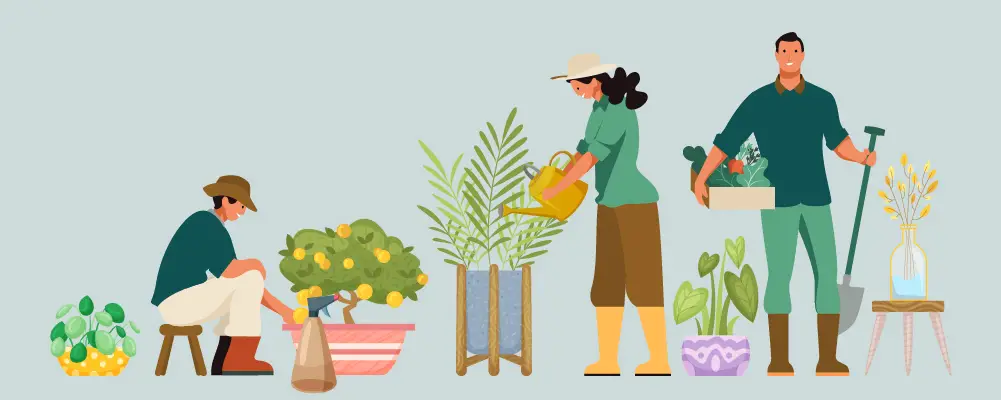
When you are starting a new garden, one of the first things you may want to think about is the type of plants and flowers you want to grow. However, there are other factors to keep in mind to ensure that your plants and flowers flourish.
Feed And Water Plants Regularly
The difference between plants surviving and dying depends on when and how much water they receive. It is advised that you water the stalk of a plant, so the water can soak down towards the roots. This is since the roots are what absorb the water, not the leaves. It is preferable to soak the roots once a week rather than water it lightly every day.
In general, during the growing season (spring and summer), you should aim to feed your plants once a month. Although you might have to feed them more if you’re growing in containers.
There are different types of feeds out there for the different plants you are growing. These feeds contain important nutrients to ensure your plants are as healthy as they can be.
Start Small
It may be enticing to tackle everything at once when beginning a fresh vegetable patch or allotment. A little at a time is far better than all at once. To prevent weeds from sprouting while you work on another area, you can easily cover parts you don’t want to cultivate with black plastic or cardboard.
Keep An Eye On Pests
The majority of garden pests pose no threat to plants. They may be left alone since they are controlled by a variety of natural predators. Although, when insect populations reach an infestation level, you must take action.
Pests like aphids, slugs, and snails are becoming more common, so keeping an eye out for them will keep your plants safe and spare you a lot of misery.
Pruning Plants
Plant pruning can seem like a difficult task. However, if you know how to do it correctly, you’ll be compensated with plants that look nice, grow well, and are probably going to flower and bear fruit better.
Knowing when to prune and how to make cuts and shape the plant are essential for successful pruning. All gardening professionals explain the importance of removing dead, dying or diseased elements of your plants. Thus, creating a much healthier and better looking plant.
Share Your Garden With Wildlife
Many people who are new to gardening view animals as the enemy, since bugs and their larvae cause plants to lose their leaves. While, birds consume our fruit, and mice devour our bean and pea seeds. Yet, wildlife can also be helpful in the garden.
Garden pests including snails, slugs, aphids, and caterpillars are all eaten by birds. Our food crops are pollinated by bees. Without the wildlife that a garden supports, including frogs, toads, hedgehogs, bees, butterflies, and birds, it wouldn’t be nearly as delightful.
The secret to appreciating your space is to provide habitats for them and to learn how to coexist in your garden with them.
How To Choose Plants
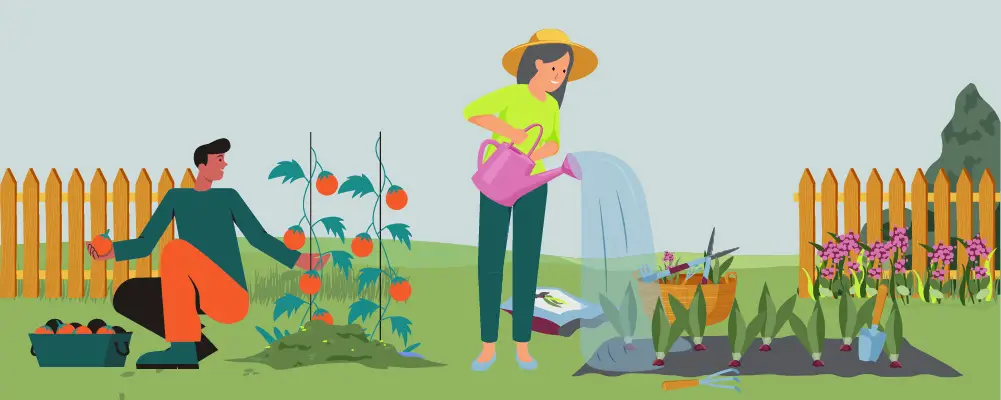
Now you know how to look after your plants and flowers properly, it is time to choose the right plants for your garden.
Growing Season
Growing season is the period of time when the conditions are perfect for growing crops and plants. This growing season can vary depending on where you live in the world. However, once temperatures start to rise, and there is no more risk of a frost, this is usually when the growing season begins.
Research the various growing seasons and the durations of a plant’s life before you start tossing seeds into the ground and believing that something will grow. This is especially helpful for flowers, garden veggies, and annual plants that only exist for one year.
There are various different growing calendars to follow. However, one of the most trusted is from the Royal Horticultural Society, since this calendar explains what you should be doing on a monthly basis.
Pick Easy Plants For Beginners
Since you are new to gardening, you ought to begin with easy plants to grow and care for. This is so you can learn how to take care of these simple plants before moving into more complex plants that have more particular needs.
Easy plants can also happen to very low maintenance plants as well. Choosing native plants for your region will make life simpler, and you can ask your local garden centers for more information on which plants are native to your area.
Tropical plants may appear fashionable and modern, but they won’t thrive in colder climates. Examples of some of the easiest plants that a beginner should consider growing in their gardens includes:
- Sweet Peas.
- Lavender.
- Calendula.
- Cherry Tomatoes.
- Pansies.
- Sunflowers.
The majority of flowering plants must be sown after all threat of ground frost has subsided if you want to grow them from seed. You will receive flowers later as a result of this. You must cultivate seedlings in pots indoors and plant them outside starting in May if you want the flowers to appear sooner in the summer.
Grow Your Own Vegetables
Starting your own garden doesn’t just have to mean flowers, you may wish to create your own vegetable patch instead. Growing your own vegetables may seem like a daunting task, but it isn’t as difficult as you may first think.
Some of the easiest vegetables to start growing yourself, include tomatoes, which can be grown in pots. Also, you may wish to grow radishes or carrots, as they can be sown straight into the ground. As a beginner you ought to avoid eggplant, cabbage or broccoli, as they are known to be more difficult to grow and more likely to be prone to pests.
Grow Herbs
If you are nervous to start growing fruits or vegetables, then you may want to set up a herb garden instead. They are much easier to care for and set up.
Cultivating garden herbs is simple, and many of them, like rosemary and sage, make lovely border plants as well. Allowing you to combine your vegetable garden with a decorative garden.
Oregano, parsley, and mint are among the more fragile herbs that are best grown in pots, whether indoors or outdoors. However, you do need to have some patience with a herb garden as certain herbs such as thyme, parsley and sage can take up to three weeks to germinate. Thus, there is no reason to panic if you don’t see seedlings straight away.
If you do decide to plant your herbs outside, they are a great way to attract wildlife such as bees and butterflies.
Harvest And Eat What You Grow
If you wish to live a more environmentally friendly lifestyle, then you may wish to start eating what you grow. Hence, you should plant foods that you enjoy eating, so that nothing goes to waste.
By growing your own vegetables and even fruits, you can cut down on your food bills. Also, growing your own food is better for you as you are aware of what you are adding to the produce. For example, you will know which fertilizers you have used, and if there are any herbicides that have been added.
Harvesting what you grow is a great activity to encourage children to partake in. They will enjoy picking their food and seeing it be made into a meal that they can enjoy. Use what you grow to make healthy and delicious meals that you and your family can enjoy together.
Soil

You might be surprised to learn, but there are different types of soils which you can find in your garden. In addition to utilizing the soil you have, you should also add compost to add more nutrients to your garden.
Types Of Soil
Understanding the type of soil that you have is really important, as it will affect the types of plants you can grow.
There are many ways in which you can test your soil to discover which type you have. Most gardens will complete either a pH, or squeeze test. However, you may wish to complete additional tests which can help you discover if your soil is well draining, and the health of your soil. This involves digging a hole and counting how many earthworms you discover. In addition to filling a hole in your garden with water and seeing how long it takes to drain away.
Soil can be classified into four different types including silt soil, sandy soil, loamy soil and clay soil.
Silt Soil – Silt is composed of very small mineral and rock particles. These particles are larger than those found in clay soil, but smaller than the particles found in sandy soil. Silt soil is able to retain water more effectively than sandy soil, since it is fine and smooth.
This kind of soil is often discovered by lakes, rivers, and other bodies of water. Due to being easily carried by flowing currents. The silt soil is more fruitful when compared to other types of soil. In order to promote soil fertility, silt soil is used in agricultural practices.
Sandy Soil – Sandy soil is made up of small pieces of worn rock. It is one of the worst types of soil to attempt growing in, as it can’t hold onto water and is very low in nutrients. Thus, it makes it almost impossible for your plant’s roots to absorb any water.
Sandy soil has a very good drainage system. Usually, rocks such as limestone, granite, and quartz fragment or break down to produce sand-like soil.
Clay Soil – Clay soil has the smallest particles. The soil’s particles are tightly packed, with little to no airspace between them. As a result of its excellent ability to retain water, this soil is impermeable to air and moisture.
When wet, clay soil can feel quite sticky. Yet, when clay soil is dry, it appears silky. Clay is the heaviest and densest soil, which doesn’t drain effectively or give plants enough space to spread out and grow.
Loamy Soil – Loamy is considered among gardeners one of the best types of soil to have. The advantages of each of the three soils, mentioned above, are combined in this mixture. For instance, it can hold onto water and nutrients, thereby making it better for farming.
Due to the balance of all the types of soil materials, as well as the presence of humus, loamy soil is also considered as an agricultural soil. Also, thanks to its inorganic origins, it has greater pH and calcium levels.
Make Use Of Compost
Compost is a great way to add more nutrients to your gardens and soil. It is also another way of ensuring that there is very little garden or kitchen waste.
Since it is associated with huge environmental benefits, the Environmental Protection Agency has explained how using your own compost improves the health of your soil. It provides it with far more nutrients, which also reduces the chances of diseases forming. The best period to make compost is from late summer to early winter.
Plant material is piled up and allowed to decay (decompose) to create compost through the process of composting. A compost bin or heap can be used to break down garden or kitchen waste over time to produce crumbly organic matter which may be utilized as mulch, a soil conditioner, or a component of potting compost.
Watering
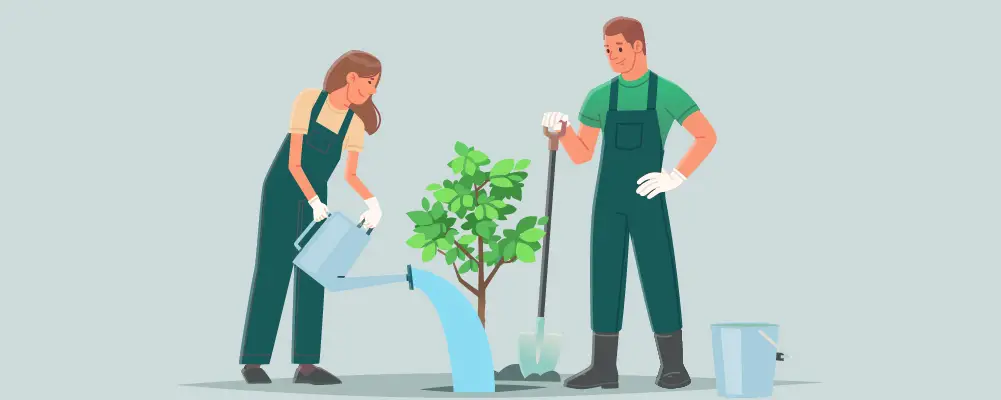
Watering is a vital aspect when it comes to maintaining your garden and plants. You must be careful to not over water, as not all plants need lots of water. Hence, you should research the plants you have chosen to plant, to see how often they should be watered.
When To Water The Garden
Think about the water-holding capacity of your soil, which will affect your watering frequency. While mulch application lessens the demand for watering. In addition to this, the weather will have a huge impact on when your plants need a drink. If it’s hot and dry, you’ll need to water more frequently, than when it’s raining.
The best time to water is in the morning since it lowers evaporation, but late afternoon is also acceptable as long as you avoid getting the leaves wet, which might cause fungus problems.
How Much Water
Although deep, infrequent watering with an inch or two of water every week is the usual rule of thumb, other factors can affect this.
Different plants have various watering needs. For example, vegetables, perennials and bedding plants have shallow root systems, so they require more frequent watering. As well as newly planted plants and larger plants that need more watering compared to smaller plants.
How To Water
Watering is a very simple process, but you must ensure you are watering the base of the plants, and not the leaves. This will help prevent diseases and ensure the water is reaching the roots of the plants.
Lawns are the only exception to the general disapproval of overhead sprinklers because they also lose more water via evaporation. Drip irrigation or soaker hoses are always preferable because they get to the roots quickly and don’t wet the foliage.
Of course, hand watering is still an option, but it takes more time. This is best reserved for smaller gardens and plants in containers.
Maintenance

To ensure your garden is looking beautiful, you must keep on top of weeding, pruning pests and other jobs to ensure your garden stays healthy and in order.
Maintain Your Garden
The maintenance you need to complete on your garden can vary depending on the plants.
A big part of maintaining your garden will involve you weeding around your plants to keep them looking their best. Weeding ensures that your plants are obtaining all the important sunlight and nutrients in the soil.
Other maintenance needs might be brushing away leaves, if you have any trees in our garden, and watering your plants.
Keep An Eye On Pests
Pest and disease prevention has always been a top priority for gardeners. Healthy plants have internal defenses against disease and pests. When plants are under stress from too much or too little water, they are more likely to attract diseases or pests.
Keep an eye out for any evident bite marks or bug colonies as your garden grows. Make sure to look along plant stems and the underside of leaves. Three common pests that you may come across are Aphids, Flea Beetles and Cabbage Worms.
Pruning Plants
Pruning is vital, to keep your plant healthy. Different plants have different pruning needs, which can be completed all year long. In addition to this, pruning promises more flowers, fruit and better looking plants. Thus, it isn’t something to be avoided.
Feed And Water Plants Regularly
Sometimes overwatering your plants will stress them and promote the spread of disease. It’s crucial to water your plants’ roots, avoiding the foliage.
You should water your plants either late at night or early in the morning. During periods of extreme weather, such as a heatwave, you should be extra cautious and water a little more frequently.
Tools And Supplies
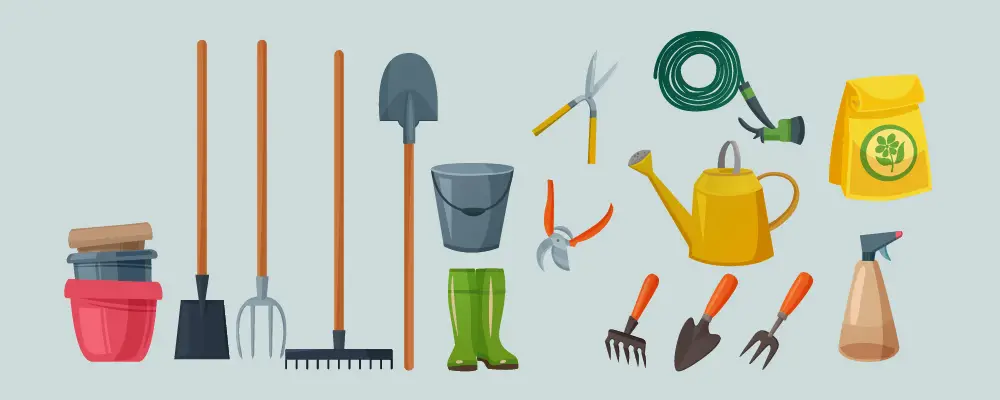
To begin gardening, you don’t need anything expensive or fancy. For a novice gardener, a few hand tools will be sufficient. This can include:
- Gloves – Gardening gloves will help proctors your hands while working.
- Spade or Trowel – This will help you turn over soil and dig holes in no time.
- Pruner – A hand pruner has many functions such as splitting roots, and trimming back smaller shrubs and branches.
- Shovel – Perfect for creating bigger holes.
- Fork – A garden fork allows you to break up soil.
- Watering Can Or Hose – The two most common ways in which to water your garden effectively.
- Wheelbarrow – Transports plants and tools all over your garden with ease.
- Pots – If you wish to start your plants inside, then you will have pots in various sizes.
- Compost – If you don’t have any homemade compost, you can always buy a couple of bags from the store.
Clean and store your new gardening tools after each use to maintain them in good operating order. After using, tools should be cleaned properly with a hose and dried with a rag to avoid rusting.
To make larger tools accessible, hang them in the tool shed or garage. Shovels and other tools can be easily hung with a few nails in the wall.
5 Essential Gardening Tips
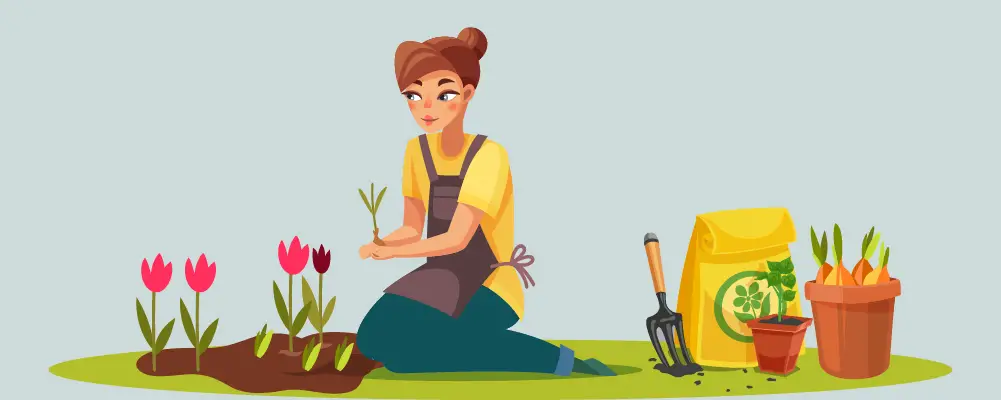
The following 5 tips will help you to become a great gardener.
1. Be Realistic With Your Time
It’s crucial to determine how much time you’ll have for gardening before starting a garden. If you have a modest-sized plot and the response is “one hour a week,” that might just be plenty of time to keep it clean, fed, and watered.
Although it depends on your climate, if the answer is “rarely,” you’d be best off with low-maintenance plants such as grasses and vegetables that you can let grow on their own.
For example, consider overwintering garlic, bulb flowers like tulips. Consider picking alternatives to installing lawns if you won’t have time to trim the grass. Search for drought-tolerant plants which don’t mind being neglected during hot spells.
You can still have a beautiful looking garden even if you are short on time
2. Watch Out For Weeds
Weeds can be an annoying plant to appear in your garden, and most gardeners will spend a lot of their time removing weeds. If you see weeds beginning to grow, then you should get rid of them as soon as possible.
The issue with weeds is they take up vital nutrients that your plants need, while also spoiling the overall appearance of your garden.
If you are going to remove weeds, you need to ensure that you also remove the roots, otherwise they will grow back quickly. Mulching can also keep weeds at bay, and you can create your own weed killer using baking soda.
3. Fertilize
The vital components for root and plant health are found in fertilizers. The frequent treatment of fertilizer is necessary for healthy plant vigor in poorer soils. Fertilizer can be applied using stakes, a foliar spray, a time-release granular solution, or a soil drench.
There is one general rule that most plants should follow, and that is to apply your fertilizer in the early spring. Although, you should keep in mind that every plant is different.
By applying your fertilizer during the spring, this promotes the production of blooms, development of leaves and the growth of fruits. It is important that you add your fertilizer during your plant’s peak growing period, of which is usually in the spring, to really benefit from it.
4. Feed Your Plants
Feeding your plants ensures they have all the necessary nutrients to grow. Although, you don’t want to over feed your plants, as this can make them weak.
The two sources of plant food are fertilizer and organic materials. Plants can get a quick boost from liquid fertilizer that will take action right away. While you can use longer-lasting powdered plant foods like tomato food, blood, fish, and bone, as well as slow-release fertilizer.
They ought to be fed during spring and summer while they are growing. Ideally, you should only need to feed your plants once a month during these seasons. However, during fall and winter, your plants don’t need to be fed at all.
5. Give Plants Space To Grow
Whether you are growing in the ground or in pots, it is important that each plant is distanced equally apart from one another. This will prevent the same plants fighting over the same nutrients in the soil and water.
As a result, you will be able to produce strong and healthy plants that aren’t restricted.
Summary

If you have decided to start gardening, then there is a lot to think about. It is important that you plan and do some research into the plants you wish to grow. The type of soil you have and the climate you live in will have a huge impact on this. Although, to start gardening, you only need a handful of really basic tools.
We hope this guide has been helpful and made it clear on how you can start gardening. By following all the advice and tips we have mentioned, you will have a successful garden full of beautiful flowers and vegetables in no time.





